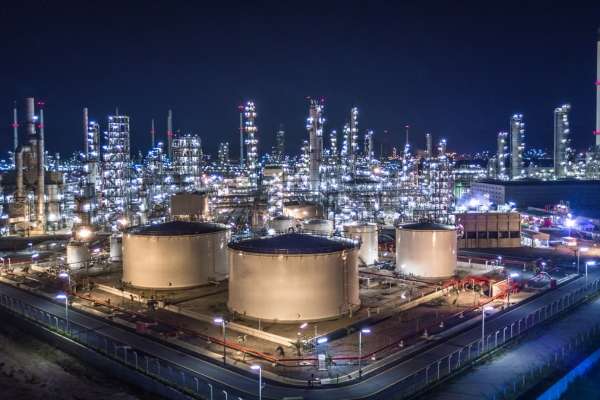
Jul 11,2023
Ceramic tubes have long been a critical component in numerous industries, thanks to their exceptional properties such as high heat resistance, excellent electrical insulation, and superior chemical stability. As technology continues to advance and industries seek more efficient and durable solutions, ceramic tubes have emerged as a key player in shaping the future of various sectors. In this article, we will delve into the emerging trends and exciting prospects for ceramic tubes, shedding light on their potential applications, innovations, and the impact they are set to make.
Advancements in ceramic tube manufacturing techniques have led to the production of smaller, intricately designed tubes, driving the miniaturization revolution in the industry. This trend addresses the need for compact and efficient electronics, telecommunications, and medical solutions. Smaller ceramic tubes offer excellent electrical insulation, making them ideal for miniaturized electronic circuits, ensuring optimal performance and reliability. These tubes enhance signal transmission and network performance in telecommunications in fiber optic systems. Moreover, miniaturized ceramic tubes find applications in medical implants, providing electrical insulation and protection in devices like pacemakers and hearing aids while allowing for more comfortable designs.
The development of novel ceramic materials, such as silicon carbide (SiC) and aluminum nitride (AlN), is expanding the applications of ceramic tubes beyond traditional ceramics. SiC offers high mechanical strength, superior thermal conductivity, and excellent resistance to wear and corrosion, making it ideal for high-temperature and abrasive environments. On the other hand, AlN exhibits excellent thermal conductivity and remarkable electrical insulation properties, making it valuable in applications requiring efficient heat transfer and high-voltage capabilities. Adopting these advanced materials in ceramic tube manufacturing enhances performance, reliability, and functionality, enabling the tubes to withstand harsh conditions and provide superior thermal management.
Additive manufacturing, or 3D printing, is revolutionizing ceramic tube production by enabling the creation of complex geometries and customization. This innovative technique breaks the constraints of traditional manufacturing, allowing manufacturers to explore intricate designs, internal structures, and customized features.
The benefits of additive manufacturing for ceramic tubes are extensive, including highly tailored tubes for specific applications, reduced material waste through precise deposition, and rapid prototyping capabilities for faster iterations and design improvements. As this technology continues to evolve, it is poised to bring further advancements and applications to the ceramic tube industry.
Ceramic tubes play a crucial role in high-temperature fuel cells, where they provide efficient gas separation and electrical insulation. Fuel cells are electrochemical devices that convert chemical energy into electrical energy. Ceramic tubes, often composed of materials like zirconia, enable the separation of fuel and oxidant gases while maintaining electrical isolation between different cell components. Their high-temperature resistance and chemical stability make them ideal for this demanding application.
Ceramic tubes also find applications in thermal energy storage systems. These systems store heat generated from renewable energy sources, such as solar and wind, and release it when needed. Ceramic tubes facilitate efficient heat transfer and storage, ensuring optimal performance and reliability in renewable energy applications.
In industries such as chemical processing, metal smelting, and glass production, ceramic tubes are extensively utilized. Their resistance to extreme temperatures and corrosive environments makes them ideal for handling aggressive chemicals and molten materials.
Chemical processing plants rely on ceramic tubes for tasks like conveying corrosive liquids and gases, as well as facilitating chemical reactions under high-temperature conditions. The excellent chemical stability and durability of ceramic tubes ensure the safe and efficient operation of these processes.
Metal smelting and glass production involve working with molten materials at extremely high temperatures. Ceramic tubes, with their high melting points and thermal shock resistance, provide a reliable conduit for molten metals and glass, enabling efficient and controlled processing.
Ceramic tubes play an indispensable role in high-voltage applications within the electronics and electrical engineering fields. Their exceptional electrical insulation properties make them ideal for power distribution systems and electrical insulation for electronic components.
In power distribution systems, ceramic tubes are used to insulate and protect high-voltage conductors, ensuring the safe and reliable transmission of electricity. The high dielectric strength and thermal stability of ceramic tubes make them a preferred choice for this critical application.
Electrical insulation in electronic components is vital to prevent short circuits and ensure proper functionality. Ceramic tubes serve as insulators in components such as resistors, capacitors, and thermistors, providing electrical isolation and thermal stability in compact electronic devices.
As we explore the emerging trends and future prospects for ceramic tubes, it becomes evident that these remarkable components are poised to shape the future of various industries. The miniaturization revolution, advanced materials, and additive manufacturing are all driving the expansion of ceramic tube applications. From energy generation and industrial processing to electronics and electrical engineering, ceramic tubes are unlocking new possibilities, offering superior performance, and contributing to advancements across numerous sectors. With their exceptional properties and continuous innovations, ceramic tubes are set to play an increasingly vital role in the technology-driven world of tomorrow.